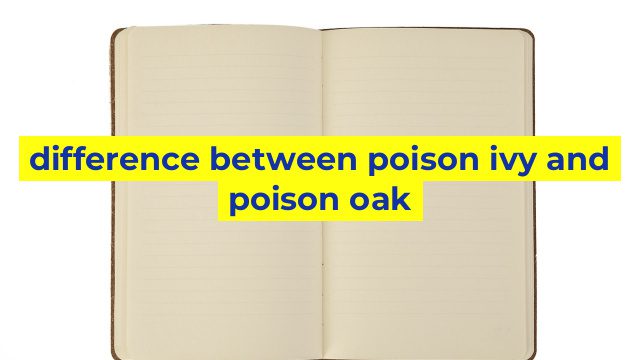The Difference Between Poison Ivy and Poison Oak
When it comes to outdoor activities, it’s important to know how to identify and avoid poisonous plants. Two of the most common poisonous plants found in North America are poison ivy and poison oak. Both plants contain the same toxic oil, called urushiol, which can cause an itchy, uncomfortable rash. However, there are some key differences between the two plants that can help you identify and avoid them.
Physical Appearance
Poison ivy and poison oak both have a distinctive three-leaf pattern, but their physical appearance can vary in a few key ways. Poison ivy often has shiny green leaves that are pointed at the tips and have a slightly serrated edge. In the fall, the leaves turn a bright red color. Poison oak, on the other hand, has leaves that are a duller green and more rounded in shape. They also have a fuzzier texture on the underside of the leaves. Poison oak leaves turn a reddish color in the fall.
Location
Another key difference between poison ivy and poison oak is their preferred habitat. Poison ivy tends to grow in wooded areas, on the edges of fields, and in other areas with partial shade. Poison oak, on the other hand, is more commonly found in dry, open areas like fields, rocky slopes, and in coastal regions.
Symptoms
While the symptoms of poison ivy and poison oak are very similar, there are some slight differences. Poison ivy tends to cause a red, itchy rash that develops into blisters. The rash can appear within hours of exposure and may last for several weeks. Poison oak can cause a similar rash, but it may also cause swelling and a burning sensation. In some cases, the rash can be severe enough to require medical attention.
Treatment
If you come into contact with poison ivy or poison oak, there are a few things you can do to treat the rash. You should wash the affected area with soap and water as soon as possible to remove any remaining urushiol oil. Calamine lotion and hydrocortisone cream can help relieve itching and swelling. In some cases, antihistamines or oral steroids may be necessary to treat severe symptoms.
In conclusion, knowing the difference between poison ivy and poison oak can help you avoid these poisonous plants and keep yourself safe during outdoor activities. Remember to always wear protective clothing and to wash your skin thoroughly if you come into contact with either plant. If you do develop a rash, seek medical attention if the symptoms are severe or if the rash is spreading rapidly.
Table difference between poison ivy and poison oak
| Characteristic | Poison Ivy | Poison Oak |
|---|---|---|
| Appearance of leaves | 3 leaflets per stem | 3 or 5 leaflets per stem |
| Leaf edges | Smooth or toothed | Wavy or lobed |
| Leaf size | Varying sizes, but can be up to 12 inches long | Smaller than poison ivy, can be up to 4 inches long |
| Leaf color | Green in the spring and summer, but can turn red, yellow or orange in the fall | Green in the spring and summer, but can turn red, yellow or brown in the fall |
| Geographic location | Found throughout the United States, except for Alaska and Hawaii | Found in the Western United States, but not as common as poison ivy |


